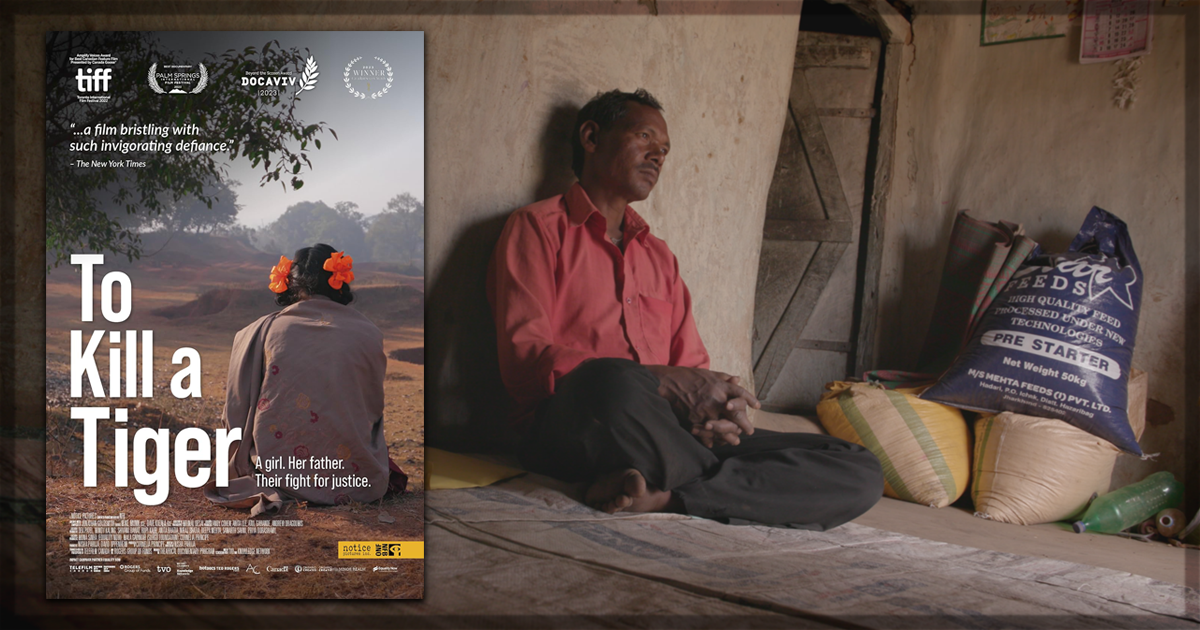Documentaries hold a unique position in the realm of storytelling, possessing an unparalleled ability to captivate and inspire audiences. They have the power of offering an in-depth look into real-life experiences and issues. However, creating a documentary is one of the toughest tasks to do in the entertainment world. Moreover, if you are making a documentary about a case that shocked the entire nation, it gets even tougher. But Nisha Pahuja’s To Kill a Tiger has done an incredible job in taking viewers on an appalling yet thought-provoking journey.
The story of Nisha Pahuja’s To Kill a Tiger
The Oscar-nominated documentary tells the nerve-wracking story of the father of a 13-year-old girl named Kiran, who was sexually abused by three young men in Jharkhand. At first, this title looks like a typical documentary that we have all seen before. However, as the story progresses, it takes audiences to a dark place where they start to wonder if there’s humanity left in this world. The film begins with a haunting look of a young girl trying to grapple with what happened to her. We see a father trying hard to attain justice for her daughter. The story moves forward by taking viewers back in time and making us know about the horrific crime.
Kiran takes a bold stand, not holding back and taking the case to court. As a result, her father, Arijit, provides the much-needed support she needs to continue. Despite the imprisonment of the perpetrators and the family’s alignment with legal support, the shocking documentary reveals the stark difference between empathy and the law, illuminating the daunting challenges survivors face in their pursuit of justice. But To Kill A Tiger doesn’t take the easy route in showcasing how difficult it can be for a normal person to get justice in this country and the stereotypes a woman has to destroy to lead a normal life after getting sexually abused.
To Kill a Tiger empowers the survivor at the center of the story
One aspect that makes this film such a revelation is how it chooses to show the survivor’s face, defying the provisions in the POCSO Act. Although it might sound controversial initially, the decision to reveal the girl’s face empowers the survivor to take the narrative into her own hands. To Kill a Tiger is not a journey of just attaining justice; it is also a narrative about her healing journey. It is an unflinching look at how the discussions around rape or sexual assault should not be considered unnatural.
Another facet that makes To Kill a Tiger an unnerving piece of cinema is how it never loses its focus on showing two contrasting faces of humanity. In the first half, the title never shies away in shedding a light on the family, making her daughter understand that what happened to her was not her fault. The family is supported by the members of the Srijan Foundation.
On the other hand, viewers get introduced to a very disturbing face of humanity that feels girls are responsible for this heinous crime. In one of the scenes, some village members get together to solve the case internally. The solution? Let’s get the girl married to one of her rapists. It’s infuriating to see how a big chunk of people living in society offer such solutions and think that everything will be fine. It’s really common to normalize or trivialize sexual violence in India. Survivors are held responsible for the assault because of what they were wearing, where they were, or their behavior, rather than putting accountability on the perpetrator.
Apart from showing the brutal face of humanity, Nisha Pahuja also takes the liberty of making her concerns heard in the documentary. It’s not normal for a documentary filmmaker to voice her own opinion on the subject matter, and some might feel that she is influencing how the narrative should be. However, it makes viewers realize that Pahuja raises a deeper understanding of the story’s context. But the most distressful part of the film comes up when the neighbors tell the girls’ family to drop the case and object to the shooting. This incident makes the family realize how difficult it can be for them to live in the village if they continue filming in the village. But the family never stops and continues their fight for justice.
The documentary is about more than just Kiran’s resilience
Throughout To Kill a Tiger, Kiran’s resilience shines through, particularly in scenes where she prepares to testify against the rapists. During her testimony, the screen fades into black, and we hear what happened that fateful night. A sense of uneasiness creeps up as we hear the girl, but her determination to confront her perpetrators keeps viewers hooked to their screens. This movie is not just about Kiran; it’s about several women who are forced to stay quiet when something traumatic takes place.
All in all, To Kill A Tiger is a testament to the resilience of the human spirit and Kiran especially. In the middle of all the darkness, there is a glimmer of hope, a reminder that empowerment and community support can pave the way for healing and justice. It’s a powerful film about human resilience.
To Kill a Tiger is now streaming on Netflix.
Have you watched the documentary To Kill a Tiger yet? Let us know if the film resonated with you by connecting with us on X @MoviesWeTexted.


